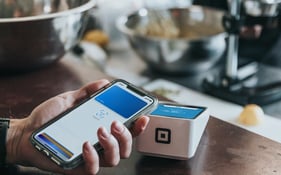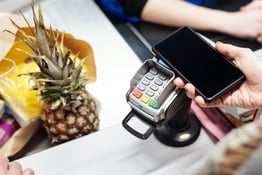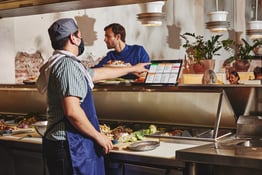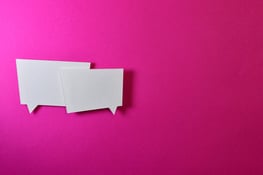Running a restaurant in the information age is hard, and technology can help—but only if you know which solutions, services, and tech partners your restaurant actually needs to succeed.
The restaurant technology space can be a dizzying expanse of buzzwords and functionalities, of established players and up-start vendors, of big promises and, quite often, big disappointments. To make your life ever-so-slightly easier, we’ve compiled this running list of all the popular types of restaurant technologies—from POS systems, to third-party delivery platforms, to reservation apps—that independent operators rely on to run their businesses.
If you’re one of those precious few cash-only spots that has a lockbox for an accounting system, and your version of “customer-retention management” is just remembering which beer your regulars prefer with their shots, well… uh, congratulations. Continue living the dream, this article isn't for you.
But if you're an independent restaurant operator looking for technology, services, and solutions that will save you time, money, and headaches in your restaurant's front-of-house and back-of-house (not to mention its digital presence and social-media footprint), read on.
Customer Relationship Management (CRM)
What is it?: A system to collect and organize important personal information about your guests (birthdays, allergies, etc.) so you can better market to them and personalize their experiences when they come in.
Customer Feedback Platforms
-
Type: Software and hardware
-
Example providers: POSist, Sprout Social, Netbase
What is it?: A way for you to gather positive and negative critiques from your customers about their experience. This can include “social listening” services, in-real-life digital surveys at POS, and more!
Financial Management
-
Type: Software
-
Example providers: Clockwork, QuickBooks, Xero
What is it?: A program that tracks your profit & loss (P&L) and gives you close insight on where you’re having success or falling short.
Food and Beverage Preparation Automation
-
Type: Hardware
-
Example providers: Creator, Briggo, Spyce
What is it?: A robot that can pour a latte or plate a burger for customers—or even just chop a bunch of onions on the line without reducing your sous chef to tears.
Loyalty and Reward Programs
What is it?: Like one of those ratty punchcards people used to keep in their wallets to get their 10th whatever free, but… not ratty, or a punchcard, because it’s either mobile or linked directly to payment.
>>>COMPARE THE TOP LOYALTY AND REWARD SOLUTIONS FOR RESTAURANTS NOW
Point of Sale (POS) Platforms
-
Type: Software and hardware
-
Example providers: Drip, Revel, TouchBistro
What is it?: The modern cash register and card processor. (There's a lot to know about them so we put together this big ol' guide!) Some companies offer integrated, purpose-built hardware and software, while others are software only, allowing you to choose your own devices.
>>>COMPARE THE TOP POS SYSTEMS FOR RESTAURANTS NOW
Reservation Platforms
What is it?: A way for would-be customers to view and select available seatings without the hassle (for them, or you) of getting on the phone.
>>>COMPARE THE TOP RESERVATION SOLUTIONS FOR RESTAURANTS NOW
Restaurant Management Systems
-
Type: Software
-
Example providers: Crunchtime BizIQ, ReServe Interactive, Restaurant365
What is it?: A big, integrated program that often does a lot of the functions of individual solutions on this list: payroll, POS, reservations, CRM, etc. Often used by operators across multiple locations.
Smartphone Payments
-
Type: Hardware and software
-
Example providers: Google Wallet, ApplePay, Samsung Pay
What is it?: A way for customers to securely transact with your POS without swiping a card or using cash. This is a form of contactless payment. It can also refer to handheld POS devices used to process card payments tableside.
>>>RELATED: 8 things you need to know about using mobile payments in your restaurant
Staffing
-
Type: Software
-
Example providers: Pared, 7shifts, Jitjatjo
What is it?: A platform (usually a mobile app) that connects restaurant operators with vetted, qualified candidates to staff temporary FOH and BOH openings.
>>>COMPARE THE TOP STAFFING SOLUTIONS FOR RESTAURANTS NOW
Table-Top Devices
-
Type: Hardware
-
Example providers: Presto, Ziosk, Skytab
What is it?: A tablet mounted to tables that customers can use for a variety of functions, from requesting drink refills, to ordering dessert, to delivering feedback on their visit.
Third-Party Delivery Applications
What is it?: Third-party delivery applications (aka 3PDs) are platforms by which your customers order your food for delivery. The software coordinates a delivery person to run between your restaurant and their address.
>>>COMPARE THE TOP THIRD-PARTY DELIVERY APPLICATIONS FOR RESTAURANTS
Wait List Management
-
Type: Software
-
Example providers: Resy, TablesReady, WaitWhile
What is it?: A program that replaces the chaos of the old “names on a clipboard” method and spits out more accurate estimates to help avoid cranky customers.
White-Label Delivery Software Management
-
Type: Software
-
Example providers: OnFleet, Sapaad, OnnaWay
What is it?: If your restaurant does a lot of delivery (especially catering!), these platforms often offer a more favorable cost structure than 3rd-party delivery services, and give you more control over the food from kitchen to customer.
***
Looking for more free resources about incorporating technology in your restaurant? Check out more Back of House original content:
-
Creative takeout ideas to help boost your restaurant's revenue
-
What you might not know about restaurant scheduling software
-
Restaurant marketing 101: ideas and strategies for email marketing, events, social media, and more
[Photo: Norma Mortenson via Pexels]





